INTRODUCTION

It's common knowledge that the appearance of consumer oriented Solid State Drives (SSDs) revolutionized the storage industry but even after several years in the market their price/capacity ratio is nowhere close to the one of regular mechanical drives and that's something that drives away casual consumers who are not really interested in getting the highest possible performance levels. Well because manufacturers know how the market works the next obvious step for them was to somehow marry the high performance levels of SSDs with the capacity of regular HDDs in order to dish out something just as fast but with higher capacity and lower price and out of that marriage hybrid drives were born. Unfortunately although the first attempts did offer some performance improvements at roughly the same price as regular HDDs they weren't very successful in convincing consumers that this was the way to go. Today we will be taking a very thorough look at the latest Desktop SSHD 4TB model which is actually Seagate’s very first attempt in combining the speed of an SSD with the large capacity of a 3.5" HDD.
Founded in 1979, Seagate is the leading provider of hard drives and storage solutions. From the videos, music and documents we share with friends and family on social networks, to servers that form the backbone of enterprise data centers and cloud-based computing, to desktop and notebook computers that fuel our personal productivity, Seagate products help more people store, share and protect their valuable digital content. Seagate offers the industry’s broadest portfolio of hard disk drives, solid-state drives and solid-state hybrid drives. In addition, the company offers an extensive line of retail storage products for consumers and small businesses, along with data-recovery services for any brand of hard drive and digital media type. Seagate employs more than 50,000 people around the world.
Seagate has already released 4 generations of 2.5" hybrid drives starting with the Momentus PSD model almost 7 years ago which was followed by the Momentus XT 500GB in 2010, the Momentus XT 750GB in 2011 and finally the Laptop Thin SSHD line slightly over a year ago. Well since Seagate has been using the hybrid technology for many years now they finally feel it was worth implementing into desktop 3.5" drives and so the Desktop SSHD models use an LSI controller paired with an eASIC SSD controller that leverages the 8GB of onboard Toshiba MLC NAND flash. Strangely enough however although both the 1TB (1TB plate) and 2TB (2x1TB plates) models of the Desktop SSHD line spin at 7200RPM the 4TB (4x1TB plates) model which we have here today (was released after the 1/2TB ones) spin up to just 5900RPM and so as expected and according to Seagate’s specs-sheet it's slightly slower. Regardless it will be nice to see what the 8GB of onboard MLC NAND can do to improve its performance so let's not spend any more time in the introduction page.
SPECIFICATIONS AND FEATURES


THE DESKTOP SSHD 4TB
As usual the drive arrived alone inside a static-free bag.
Appearance-wise the Desktop SSHD looks just like any other 3.5" model (although it reminds us of enterprise class models mostly).
At the sticker ontop of the drive you can see the model name, capacity, serial number, part number, barcodes, electrical requirements, installed firmware and the factory rollout date (our sample left the factory on 09/11/2013).
The PCB placed at the rear is the same green color as always with Seagate drives and the controllers/chips are placed on the opposite side.
Right next to the SATA III data and power connectors we see 4 pins which are most likely used for FW updates.
TEST BED


TESTING METHODOLOGY
Thoroughly testing hard disk drives may require time and patience but that's just about it. Of course that doesn't mean that one must take it lightly, at least not when people base their decision on your results. True many choose to only use 2 or 3 benchmarking suits in order to measure the performance of a drive or drives since quite honestly most benchmarking suites do tend to agree with each other (so it's not really wrong) but we always like to take things a step further not because we have to but because we want to be almost 100% certain of the results we get and post in our charts.
So in this kind of reviews we will use a total of 7 different benchmarking suites in an effort to bring you the most accurate results across the board. Now the only reason why i say effort is because real-world usage is not always on par with what results one gets by running several benchmarks on a drive and that's mainly because there are many variables at work from ambient temperatures to hardware configurations and even firmware versions. The benchmarking applications we use are the AIDA64 suite (former Everest Pro), HD Tune Professional, HD Tach RW, ATTO, Sisoftware Sandra Pro, Crystal Disk Mark 64bit and the PCMARK 7 (secondary storage suite). These benchmarking tools are the best in what they do and as you will also see later on their results more or less agree. Each test is performed a total of 6 times and then the average is recorded into the charts. Temperatures are recorded using Hard Disk Sentinel and after 45 minutes of continuous testing in a 23 degrees Celsius temperature controlled room. Finally we also use an ExTech HD600 dBA meter on each of the drives (5cm away) in order to accurately record their noise levels, although if you don't turn off all system fans when doing so it's quite possible that you will never even hear the drive. The operating system as usual is a fresh installation of Microsoft Windows 7 Ultimate Service Pack 1 with every update installed up until the 18th of March 2014.
TEST RESULTS - AIDA64 / ATTO
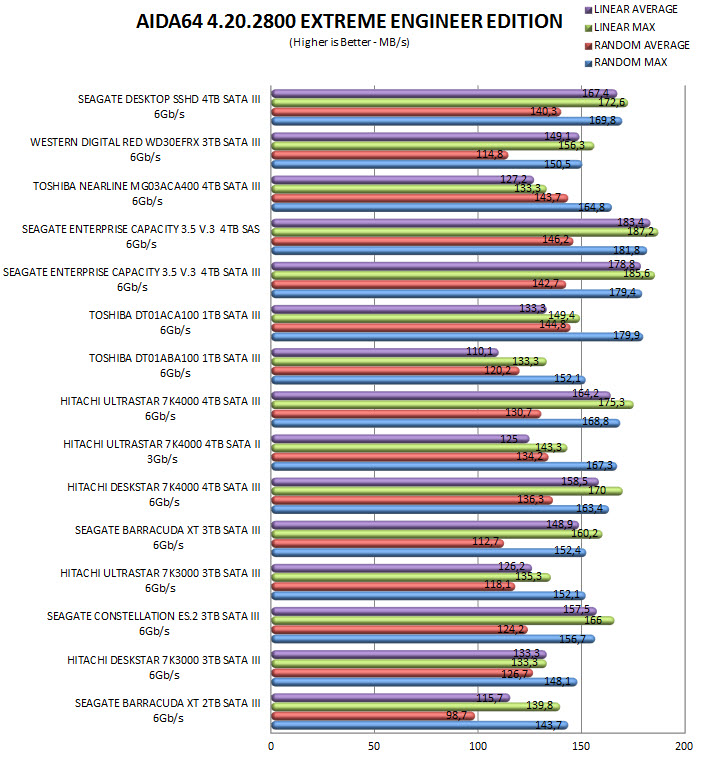
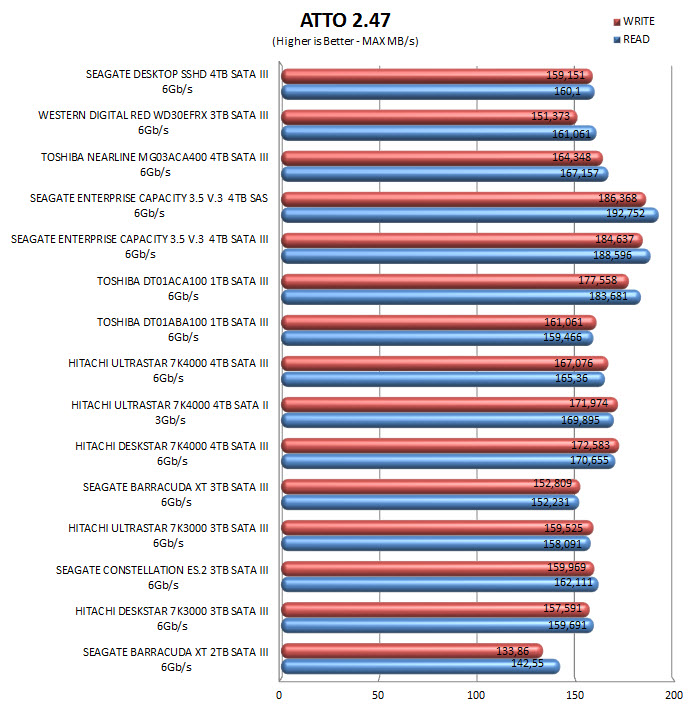
TEST RESULTS - HD TACH RW / HD TUNE PRO
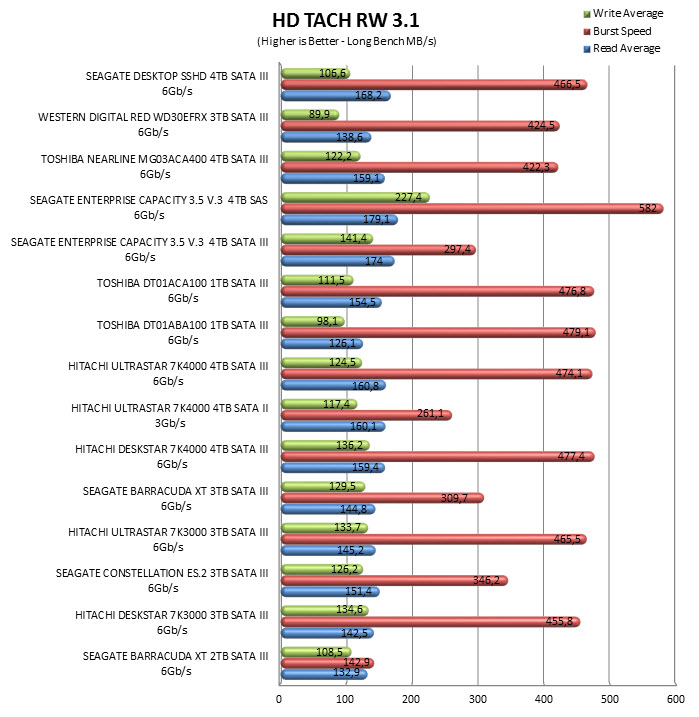
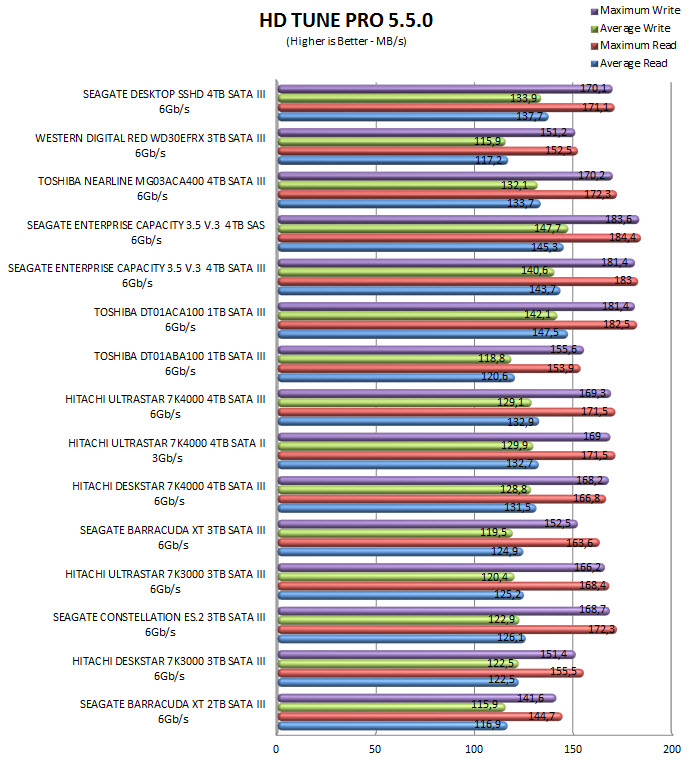
TEST RESULTS - SISOFTWARE SANDRA PRO / CRYSTAL DISK MARK
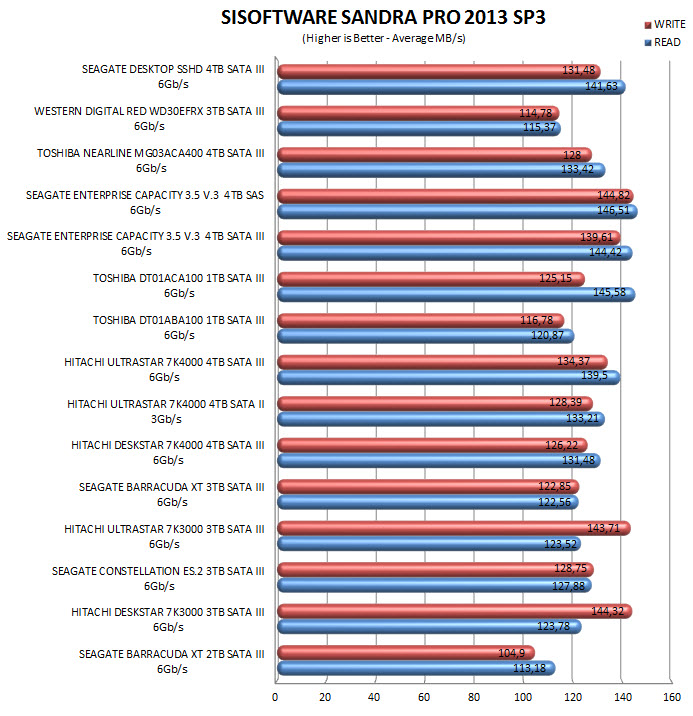

TEST RESULTS - PCMARK 7
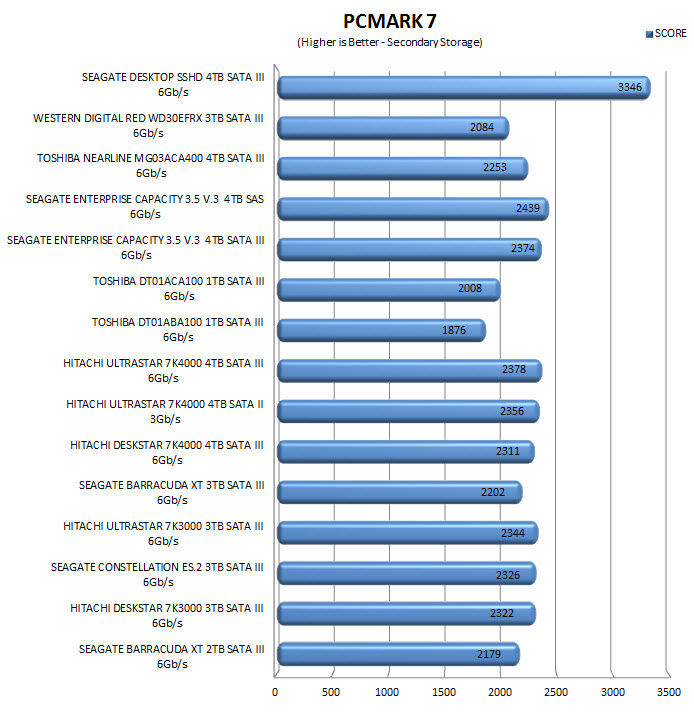
TEST RESULTS - TEMPERATURES / NOISE LEVELS


CONCLUSION
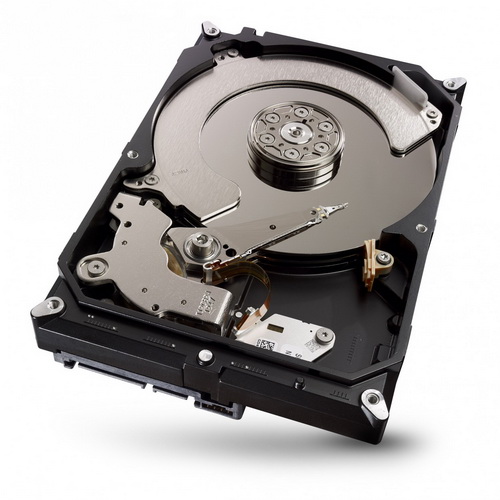
Roughly 3 years ago when the first 2.5" hybrid drives made their debut in the market i started wondering why manufacturers decided to focus in that area instead of offering the same technology but with the much larger capacity 3.5" drives. True 3.5" drives may not fit in laptops but that's also one of strange things about their choice since nobody wants to have better performance in a laptop than in a desktop system not to mention that even today 2.5" drives are limited in capacity (up to 2TB) while there are 3.5" ones with capacities up to 3 times larger (6TB). Some say that manufacturers chose that path in order to not jeopardize their main market which is focused towards desktop users even if they had invested in improving 3.5" drives things couldn't had gone wrong as they didn't with 2.5" ones at least not in terms of hardware. Regardless todays tests show that the Desktop SSHD model does offer a good performance increase with frequent accessed data even compared to Seagate’s flagship enterprise drive line (Enterprise Capacity 3.5 V3 aka Constellation ES.3) and in the end that's what matters (although I’m still waiting to see more than just 8GB of MLC in such drives). Its rotational speed of 5900RPM is something i can't really explain when the other two models in the Desktop SSHD line spin at 7200RPM but even so the performance of the drive is very good (perhaps since the 4TB model uses 4 plates it would increase heat if spinning at 7200RPM but that's just a quick hypothesis).
Price-wise the new Desktop SSHD 4TB model sits between the consumer oriented Barracuda and the enterprise class Enterprise Capacity 3.5 v3 drives and so it currently retails for USD215.50 inside the USA (Amazon.com) and 170Euros inside the EU (Amazon.co.uk). Of course as stated in past reviews hybrid drive technology is far from being perfect and one of the reasons is the small amount of NAND flash used (for example just 8GB for an 4TB drive is way too low) although strictly for OS use it should be sufficient to load all primary system files. Seagate just never ceases to dish out something new and with the release of the very first 3.5" hybrid drive in the market they have done so once again. Overall the Desktop SSHD 4TB model is probably the next best thing to enterprise grade hard disk drives currently and so it really goes without saying that it gets our Golden Award.
 PROS
PROS
- Build Quality
- Ideal For OS Use (SSD-Like Performance For Cached Files)
- Very Good Overall Performance
- Capacity (Up To 4TB)
- Temperatures/Noise Levels
- 3 Years Warranty
- Price (For Some)
CONS
- 5900RPM (Slower Performance To The 1/2TB Models)

 O-Sense
O-Sense







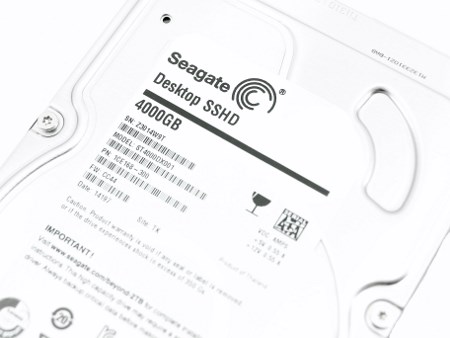
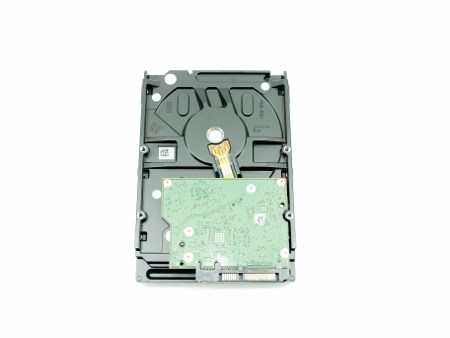
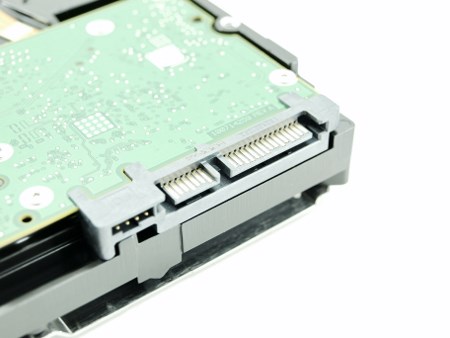


.png)

